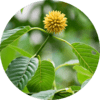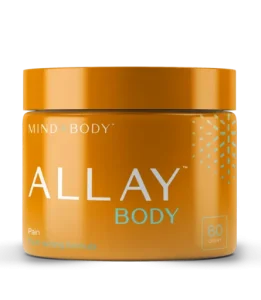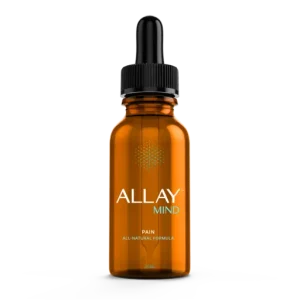A Growing Problem
In recent years, the United States has been grappling with an alarming and devastating public health crisis known as the opioid epidemic. Characterized by the widespread misuse and addiction to prescription and illicit opioids, this crisis has had profound social, economic, and health repercussions across the nation. The ills of the opioid crisis have permeated communities, leaving a trail of destruction and despair in its wake.
In this article, we will delve into the grim realities of the opioid crisis in America, examining its causes, consequences, and the urgent need for comprehensive solutions.
The Origins and Causes
The opioid crisis in America did not occur overnight; it has roots that can be traced back several decades. The over-prescription of pain medications, such as oxycodone, hydrocodone, and fentanyl, played a significant role in fueling the crisis.1 Pharmaceutical companies, driven by profit at any cost, aggressively marketed these drugs as safe and non-addictive, despite mounting evidence to the contrary. This misleading information led to a surge in prescriptions, resulting in widespread opioid dependence.2
Consequences and Impact
The consequences of the opioid crisis have been devastating on multiple fronts. First and foremost, there has been an unprecedented loss of life. According to the Centers for Disease Control and Prevention (CDC), more than 500,000 Americans have died from opioid overdoses since 1999.3 Each day, approximately 130 people lose their lives to opioid-related overdoses, making it one of the leading causes of preventable deaths in the country.
Moreover, the crisis has strained healthcare systems and led to a surge in emergency department visits related to opioid misuse and overdose. Individuals suffering from opioid addiction often require extensive medical interventions and long-term treatment, putting a burden on healthcare providers and diverting resources from other critical areas.4
Beyond the healthcare sector, the opioid crisis has also inflicted significant economic costs. The loss of productivity, increased healthcare expenditures, and the burden on social welfare programs have strained government budgets at both the state and federal levels.5 Additionally, communities ravaged by opioid addiction experience higher rates of unemployment, crime, and homelessness, further exacerbating the social and economic toll.6
Addressing the Crisis: A Call for Comprehensive Solutions
To combat the opioid crisis effectively, a multifaceted approach is essential. First and foremost, efforts must focus on prevention. This involves implementing stricter regulations on opioid prescriptions, improving physician education on pain management alternatives, and raising public awareness about the risks and potential consequences of opioid use.7
Access to effective treatment and recovery services must be expanded. This includes increasing the availability of medication-assisted treatment (MAT), which combines FDA-approved medications with counseling and behavioral therapies. Removing barriers to accessing treatment, expanding insurance coverage, and supporting harm reduction strategies like needle exchange programs are critical steps towards saving lives and promoting long-term recovery.
Furthermore, efforts to address the crisis should prioritize early intervention and support for at-risk individuals. Expanding access to naloxone, a medication that can reverse opioid overdoses, can significantly reduce mortality rates. Education programs in schools and communities can help dispel misconceptions about opioids and provide resources for those in need.
Finally, tackling the root causes of addiction, such as mental health issues and socioeconomic disparities, is paramount. Comprehensive approaches that integrate mental health services, support for social reintegration, and economic opportunities can contribute to long-term recovery and reduce the likelihood of relapse.7
Moving Forward
The opioid crisis in America has unleashed a wave of devastation, claiming countless lives, tearing families apart, and burdening communities and the healthcare system. Recognizing the urgency of the situation, concerted efforts from policymakers, healthcare professionals, and society at large are required to stem the tide of this epidemic. By addressing the causes, expanding prevention and treatment options, and prioritizing support for individuals and communities affected by addiction, we can forge a path towards healing and recovery, restoring hope and well-being to those impacted by the ills of the opioid crisis.
What is the solution to the problems
outlined in this article?
Well at Mind & Body Naturals, we believe that Mother Nature has all the answers. After two years of human trials, thousands of hours of Research and Development and a commitment to helping our customers alleviate their mental and physical suffering, our proprietary Pain blends can and will solve many of the problems outlined in this article. They are made of 100% all-natural, non-addictive, plant-based ingredients – all from ethically sourced farms. Let’s talk about those ingredient blends and how they work next.
Mother Nature’s Answer
In the heart of Southeast Asia lies Mitragyna Speciosa, a botanical marvel known for its ancient history and impressive range of natural and plant-based benefits. Mitragyna Speciosa is also commonly referred to as Kratom. This tropical evergreen tree has captured the attention of modern society due to its potential to alleviate pain and inflammation.
Now let’s be SUPER CLEAR – we’re not talking about dangerous synthetic Kratom extracts or concentrates made in a lab. Opioids also had their beginnings in a harmless, plant-based poppy seed tea that had pain relieving and sedative properties. But someone decided it needed to be stronger, so went to work in the lab and the result is over 80,000 opioid-related deaths annually in this country – to say nothing of the harm opioid addiction does to individuals and families.
No, we believe that Mother Nature has all the answers. Which is why we are talking about a proprietary blend of 100% all-natural, non-addictive, plant based Kratom from ethically sourced farms.
For centuries, indigenous communities in countries like Thailand, Indonesia, and Malaysia have revered Kratom for its therapeutic properties.8 Traditionally, the leaves were chewed or brewed into a tea to enhance mood, increase energy, and relieve physical discomfort.9-11 Today, scientific research is beginning to unveil the secrets behind this ancient remedy.
 While initially used for its stimulant effects research has found multiple uses for this ingredient including mood enhancement, pain relief, appetite suppression/weight loss, enhanced sociability, pain relief, as an anti-inflammatory, and for its anti-depressant effects.10, 14, 15, 22, 24-29 Studies also indicate that 68% of respondents use Mitragyna Speciosa for help with relieving their pain.20
While initially used for its stimulant effects research has found multiple uses for this ingredient including mood enhancement, pain relief, appetite suppression/weight loss, enhanced sociability, pain relief, as an anti-inflammatory, and for its anti-depressant effects.10, 14, 15, 22, 24-29 Studies also indicate that 68% of respondents use Mitragyna Speciosa for help with relieving their pain.20
One of Kratom’s primary active compounds is Mitragynine, which interacts with the brain’s opioid (Mu) receptors, influencing mood and pain perception.12,13 Studies have shown that Mitragyna acts as an analgesic, effectively inhibiting specific pathways to aid in both relieving inflammatory conditions and providing pain relief (numbness to pain).14,15 Further research has indicated that Mitragyna blocks detection of painful stimuli (antinociceptive) and can act as not only an anti-inflammatory agent, but provide muscle relaxant properties.16 This makes Kratom, or Mitragyna Speciosa, an appealing natural alternative for those seeking relief from anti-inflammatory and pain related issues, without the risk of addiction or adverse side effects.14, 16-18, 20
Moreover, Mitragyna’s interaction with the brain’s dopamine and serotonin receptors may explain its mood-boosting and analgesic effects. Individuals often report feelings of euphoria, pain relief, improved motivation, and relaxation.19,20 This makes it a potential aid for those combating pain, low-mood, and lack of enthusiasm in their daily lives.
Kratom has also shown remarkable promise in managing depression and anxiety symptoms also, which effects up to 45% of individuals which deal with chronic pain.20-23, 28-30 By acting on the body’s serotonin receptors, Kratom may offer natural anxiolytic and anti-depressive effects, helping individuals to lead more comfortable and fulfilling lives.

Introducing Nature’s Answer To Pain in America
By now you’re probably wondering how to get this proprietary blend of natural, ethically sourced, and affordable Kratom. We’ve got the solution!
We’re Mind and Body Naturals, a revolutionary wellness company with a range of all-natural, plant-based products across four categories – Sleep Disorders, Anxiety & Depression, Energy & Mental Focus (treating ADD & ADHD), and Pain. Our Mitragyna Speciosa blends are only one example of the dozens of “Secret all-natural Ingredients” that we use to help our customers feel like themselves again.
But how we came to be – our “why” is very personal. Jon Black, our founder & CEO had 2 very close friends commit suicide.
 During that same period, members of his own family began to experience significant mental health challenges.
During that same period, members of his own family began to experience significant mental health challenges.
That’s when he sought out – and began working with, naturopathic doctors, research scientists, and chemists. Together, they began researching the globe for all-natural, non-addictive, plant-based ingredients that would help his loved ones.
Two years of research and human trials followed, and Mind & Body Naturals is the result. Now, our vision is to relieve the mental and physical suffering of millions of people, using all-natural, non-addictive, plant-based medicine.
Our flagship fast-acting pain support products are Allay Body and Allay Mind both backed by over 2-years of pre-clinical human trials, over 150 scientifically published articles referenced, and thousands of positive reviews.

This non-addictive, plant-based proprietary pain blend is rooted in nature and backed by extensive research and studies. Allay Body is meant to be used first thing in the morning and can last throughout the day. Each jar of Allay Body contains 60 easily digestible vegetable capsules with our “All-Natural Pain Formula.” With over 50 different strains globally and after two years of human trials, we’ve been hard at work creating and testing to produce the best possible blend of strains for our customers. We believe the results will surprise you – and without side effects to boot! Be Yourself AgainTM with Allay Body.

Allay Mind is another one of our non-addictive, plant-based, proprietary solutions rooted in nature and backed by extensive research and studies. This formula provides a unique propriety blend of cannabinoids, terpenes, and essential oils with ingredients backed by 2 years of human trials, to provide you with ongoing Pain support.31-40
The effects of Allay Mind are like Allay Body, but Allay Mind uses an oil dropper as the delivery method and can be used throughout the day – or as needed when pain begins to creep in. Place a few drops under the tongue and wait at least 60 seconds to properly absorb, then swallow.
So Why Two Products?
During our internal research and testing over a two-year period, we discovered that each user responds differently to our proprietary formulas. Some find more relief using Allay Mind throughout the day, and others prefer to take Allay Body first thing in the morning to start their day out right. But most of the people in the trials saw significant increases in the effectiveness of these products when they were both taken together.
How Soon Does It Work?
The body-calming, non-addictive, and non-drowsy effects of Allay Body and Allay Mind are typically felt within 30-60 minutes and can last throughout the day.
If You’re Looking To:
- Reduce Physical and Mental Pain Naturally
- Alleviate the cumulative effects of pain
- Enhance Your Body’s Natural Ability to Heal
- Relieve Aches and Discomfort
- Give 100% All-Natural Ingredients a Try
- Feel the Natural Goodness within 30 Minutes
Then we welcome you to try our products risk-free here! Enjoy a 60-day money-back guarantee and as part of our limited-time introductory promotion each of our products are just $9.99 each!
References
- NIH. “Drug Overdose Death Rates.” National Institute of Drug Abuse, 30 Jun. 2013. https://nida.nih.gov/research-topics/trends-statistics/overdose-death-rates
- Kolodny, A., Courtwright, D. T., Hwang, C. S., Kreiner, P., Eadie, J. L., Clark, T. W., & Alexander, G. C. (2015). The prescription opioid and heroin crisis: a public health approach to an epidemic of addiction. Annual Review of Public Health, 36, 559-574.
- National Center for Health. “Drug Overdose Mortality by State.” Centers for Disease Control, 1 Mar. 2022. https://www.cdc.gov/nchs/pressroom/sosmap/drug_poisoning_mortality/drug_poisoning.htm
- Florence, C. S., Zhou, C., Luo, F., & Xu, L. (2016). The Economic Burden of Prescription Opioid Overdose, Abuse, and Dependence in the United States, 2013. Medical Care, 54(10), 901-906.
- Ropero-Miller JD, Speaker PJ. The hidden costs of the opioid crisis and the implications for financial management in the public sector. Forensic Sci Int Synerg. 2019 Sep 21;1:227-238. doi: 10.1016/j.fsisyn.2019.09.003. PMID: 32411975; PMCID: PMC7219173.
- Children’s Bureau. “Parental Substance Use as Child Abuse.” Child Welfare Information Gateway, Jul. 2019. https://www.childwelfare.gov/pubPDFs/parentalsubstanceuse.pdf
- National Academies of Sciences, Engineering, and Medicine. “Pain Management and the Opioid Epidemic: Balancing Societal and Individual Benefits and Risks of Prescription Opioid Use.” Washington (DC): National Academies Press (US); 2017 Jul 13. Available from: https://www.ncbi.nlm.nih.gov/books/NBK458661/
- Singh, Darshan, et al. “Changing trends in the use of kratom (Mitragyna speciosa) in Southeast Asia.” Human Psychopharmacology: Clinical and Experimental 32.3 (2017): e2582.
- Tanguay, P., & Drug Policy Consortium, I. (2011). Kratom in Thailand. SSRN Electronic Journal.
- E Adkins, Jessica, Edward W Boyer, and Christopher R McCurdy. “Mitragyna speciosa, a psychoactive tree from Southeast Asia with opioid activity.” Current topics in medicinal chemistry 11.9 (2011): 1165-1175.
- Vicknasingam, Balasingam, et al. “The informal use of ketum (Mitragyna speciosa) for opioid withdrawal in the northern states of peninsular Malaysia and implications for drug substitution therapy.” International Journal of Drug Policy 21.4 (2010): 283-288.
- Suhaimi, F. W., Yusoff, N. H. M., Hassan, R., Mansor, S. M., Navaratnam, V., Müller, C. P., & Hassan, Z. (2016). Neurobiology of Kratom and its main alkaloid mitragynine. Brain Research Bulletin (Vol. 126, pp. 29–40). Elsevier Inc.
- Johnson LE, Balyan L, Magdalany A, Saeed F, Salinas R, Wallace S, Veltri CA, Swogger MT, Walsh Z, Grundmann O. The Potential for Kratom as an Antidepressant and Antipsychotic. Yale J Biol Med. 2020 Jun 29;93(2):283-289. PMID: 32607089; PMCID: PMC7309668.
- Mat, N. H., Bakar, S. N. S., Murugaiyah, V., Chawarski, M. C., & Hassan, Z. (2023). Analgesic effects of main indole alkaloid of kratom, mitragynine in acute pain animal model. Behavioural Brain Research, 439.
- Utar, Z., Majid, M. I. A., Adenan, M. I., Jamil, M. F. A., & Lan, T. M. (2011). Mitragynine inhibits the COX-2 mRNA expression and prostaglandin E 2 production induced by lipopolysaccharide in RAW264.7 macrophage cells. Journal of Ethnopharmacology, 136(1), 75–82.
- Suhaimi, F. W., Yusoff, N. H. M., Hassan, R., Mansor, S. M., Navaratnam, V., Müller, C. P., & Hassan, Z. (2016). Neurobiology of Kratom and its main alkaloid mitragynine. In Brain Research Bulletin (Vol. 126, pp. 29–40). Elsevier Inc. https://doi.org/10.1016/j.brainresbull.2016.03.015
- Kruegel AC, Grundmann O. The medicinal chemistry and neuropharmacology of kratom: A preliminary discussion of a promising medicinal plant and analysis of its potential for abuse. Neuropharmacology. 2018 May 15;134(Pt A):108-120. PMID: 28830758.
- Henningfield, J., Fant, R., & Wang, D. (2021). Annotated Update: The Abuse Potential of Kratom According to the 8 Factors of the Controlled Substances Act: Implications for Regulation and Research. Front Pharmacol. 2021; 12: 775073. PMID: 35197848
- Swogger, M. T., Hart, E., Erowid, F., Erowid, E., Trabold, N., Yee, K., Parkhurst, K. A., Priddy, B. M., & Walsh, Z. (2015). Experiences of Kratom Users: A Qualitative Analysis. Journal of Psychoactive Drugs, 47(5), 360–367.
- Grundmann, Oliver. “Patterns of kratom use and health impact in the US—results from an online survey.” Drug and alcohol dependence 176 (2017): 63-70.
- Vicknasingam B, Chooi WT, Rahim AA, Ramachandram D, Singh D, Ramanathan S, Yusof NSM, Zainal H, Murugaiyah V, Gueorguieva R, Mansor SM, Chawarski MC. Kratom and Pain Tolerance: A Randomized, Placebo-Controlled, Double-Blind Study. Yale J Biol Med. 2020 Jun 29;93(2):229-238. PMID: 32607084; PMCID: PMC7309661.
- Coe, Marion A., et al. “Kratom as a substitute for opioids: results from an online survey.” Drug and alcohol dependence 202 (2019): 24-32.
- Raffa, R. B., et al. “Nature’s first “atypical opioids”: Kratom and mitragynines.” Journal of clinical pharmacy and therapeutics 43.3 (2018): 437-441.
- Kumarnsit, E., Keawpradub, N., & Nuankaew, W. (2006). Acute and long-term effects of alkaloid extract of Mitragyna speciosa on food and water intake and body weight in rats. Fitoterapia, 77(5), 339–345.
- Chittrakarn S, Sawangjaroen K, Prasettho S, Janchawee B, Keawpradub N. Inhibitory effects of kratom leaf extract (Mitragyna speciosa Korth.) on the rat gastrointestinal tract. J Ethnopharmacol. 2008 Feb 28;116(1):173-8. doi: 10.1016/j.jep.2007.11.032. Epub 2007 Nov 28. PMID: 18191353.
- Limcharoen T, Pouyfung P, Ngamdokmai N, Prasopthum A, Ahmad AR, Wisdawati W, Prugsakij W, Warinhomhoun S. Inhibition of α-Glucosidase and Pancreatic Lipase Properties of Mitragyna speciosa (Korth.) Havil. (Kratom) Leaves. Nutrients. 2022 Sep 21;14(19):3909. doi: 10.3390/nu14193909. PMID: 36235558; PMCID: PMC9572452.
- Poulton AS, Hibbert EJ, Champion BL, Nanan RK. Stimulants for the Control of Hedonic Appetite. Front Pharmacol. 2016 Apr 25;7:105. doi: 10.3389/fphar.2016.00105. PMID: 27199749; PMCID: PMC4843092.
- Swogger MT, Walsh Z. Kratom use and mental health: A systematic review. Drug Alcohol Depend. 2018 Feb 1;183:134-140. PMID: 29248691.
- Idayu, N Farah et al. “Antidepressant-like effect of mitragynine isolated from Mitragyna speciosa Korth in mice model of depression.” Phytomedicine: international journal of phytotherapy and phytopharmacology vol. 18,5 (2011): 402-7.
- Kruegel AC, Grundmann O. The medicinal chemistry and neuropharmacology of kratom: A preliminary discussion of a promising medicinal plant and analysis of its potential for abuse. Neuropharmacology. 2018 May 15;134(Pt A):108-120. PMID: 28830758.
- Abraham, Antony D et al. “Orally consumed cannabinoids provide long-lasting relief of allodynia in a mouse model of chronic neuropathic pain.” Neuropsychopharmacology : official publication of the American College of Neuropsychopharmacology vol. 45,7 (2020): 1105-1114.
- Mlost, Jakub et al. “Cannabidiol for Pain Treatment: Focus on Pharmacology and Mechanism of Action.” International journal of molecular sciences vol. 21,22 8870. 23 Nov. 2020
- Schilling, Jan M et al. “Cannabidiol as a Treatment for Chronic Pain: A Survey of Patients’ Perspectives and Attitudes.” Journal of pain research vol. 14 1241-1250. 5 May. 2021
- Frane, N., Stapleton, E., Iturriaga, C. et al. Cannabidiol as a treatment for arthritis and joint pain: an exploratory cross-sectional study. J Cannabis Res 4, 47 (2022).
- DeLong, Gerald T et al. “Pharmacological evaluation of the natural constituent of Cannabis sativa, cannabichromene and its modulation by Δ(9)-tetrahydrocannabinol.” Drug and alcohol dependence vol. 112,1-2 (2010): 126-33.
- Zgair, Atheer et al. “Dietary fats and pharmaceutical lipid excipients increase systemic exposure to orally administered cannabis and cannabis-based medicines.” American journal of translational research vol. 8,8 3448-59. 15 Aug. 2016
- Bahi, Amine et al. “β-Caryophyllene, a CB2 receptor agonist produces multiple behavioral changes relevant to anxiety and depression in mice.” Physiology & behavior vol. 135 (2014): 119-24.
- Aly, Esraa et al. “β-Caryophyllene, a CB2-Receptor-Selective Phytocannabinoid, Suppresses Mechanical Allodynia in a Mouse Model of Antiretroviral-Induced Neuropathic Pain.” Molecules (Basel, Switzerland) vol. 25,1 106. 27 Dec. 2019.
- Bonjardim, Leonardo R et al. “Evaluation of the anti-inflammatory and antinociceptive properties of p-cymene in mice.” Zeitschrift fur Naturforschung. C, Journal of biosciences vol. 67,1-2 (2012): 15-21.
- Santana, M. F., Quintans-Júnior, L. J., Cavalcanti, S. C. H., Oliveira, M. G. B., Guimarães, A. G., Cunha, E. S., Melo, M. S., Santos, M. R. V., Araújo, A. A. S., & Bonjardim, L. R. (2011). P-Cymene reduces orofacial nociceptive response in mice. Revista Brasileira de Farmacognosia, 21(6), 1138–1143.



Leave a Reply